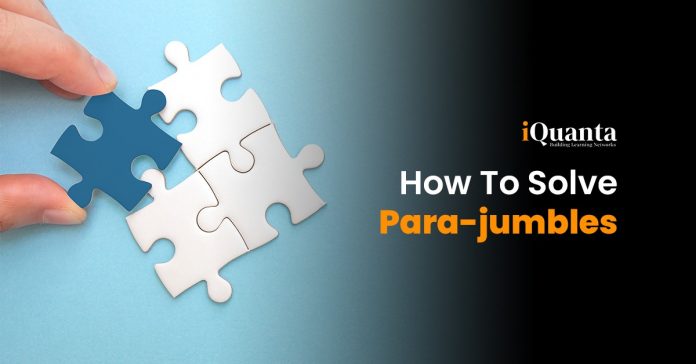Tips on Solving Para-jumbles for Banking Exams
How to solve for Para Jumbles?
Para jumbles, also known as Sentence Rearrangement, is one of the most common topics that can be found in major competitive exams. In fact, in several banking exams also you as an aspirant, will encounter questions on it. Para jumble is one of the easiest topics, which, through little application of mind can be solved quickly and correctly. Many students find this topic difficult to crack. So, it is important that you practise more questions on it in a controlled test environment. You may even subscribe to a test series on para jumbles to improve your ability to answer all questions with a cent per cent accuracy. Nevertheless, in this article, we shall be discussing para jumbles tricks so that you can accurately solve para jumbles in less time.
Identify the opening sentence:
One of the para jumbles tricks is that there will be a sentence that would introduce a person, place, committee, theme, idea or concept. In most cases, that should be the opening sentence. Also, you may come across sentences that may have connectors like though, although, since, if, until, after, alternatively, because, consequently, notwithstanding, when, and so, however, whoever, for, etc. In most cases, you will find that they are never the opening sentence and are basically following the previous sentences.
Look out for a central theme/idea
It will always be a good idea to look out for the central theme of each para jumble question. Generally, the flow of the story/dialogue/conversation will go in such a way that it will help piece together the paragraph in the right order.
Chronological sequence
In some of the questions, you might come across sentences that is talking out some activities, and so in those questions, you can solve the questions merely by analysing the sequence of activities.
Articles- A, AN & The
The article “A” and “An” are generally used while introducing something for the first time, and also for stating general facts. As far “the “ is concerned, it is used to denote something or someone specific or when the person or thing for which the article has been used had already been introduced.
Pronouns
You will generally find pronouns, like he, she, they, it, them, their, him, her, etc, being used when the person being talked about has already been introduced. Hence, you may, with the help of pronouns as well, solve the questions.
Adjectives
Adjectives are used to identify or quantify individual people or unique things and are usually positioned before the noun or pronoun that they modify. However, adjectives such as simple, better, cleverer, easier, etc. are used to compare people or things, and so they showcase a relation between another person or thing. Hence, if you come across such types of adjectives, then do take help of it while solving para jumbles.
General Para jumbles Tricks:
- The first and main thing you should be doing is to read the sentence well and understand what message the paragraph is trying to give
- Once that is done, try to identify the topic and theme or main idea.
- Look out for relevant clues/linking words, mandatory pairs, introductory statement or concluding statement
- You can also lookout for a pair of nouns and pronouns, as noun or subjects mentioned in a statement is most likely to be replaced by a pronoun in the next sentence.
- In many instances, you will also find that two statements based on the subject will form a pair.
- In case you are given a set of statements having reference to time-based events, then ensure that you maintain a particular order.
- Of uttermost importance, you should focus on improving your vocabulary and reading skills, as these questions will test your vocabulary and reading skills.
- Avoid jumping into the options at the first instance, especially, when you are practising questions on it.
- Finally, it is strongly recommended to you practise as many questions as possible on para jumbles in a controlled environment.
Example:
- She sells mangoes throughout the day and returns home at 8 in the evening.
- She has her dinner at 9 and goes to sleep at 11.
- Reenu has a mango selling business.
- She purchases mangoes from Greenmarket in the morning.
Central theme: Activities of a person who owns a mango selling business.
Activity tracking:
Sentence ‘c’ is clearly the opening sentence since it introduces the person ‘Reenu’ and her ‘Cupcake business’.
The Para jumble talks about her routine, i.e. from morning to evening. Therefore, the sentence ‘d’ comes second as it talks about her morning activity (‘in the morning’ is an indicator).
This is followed by the sentence ‘a’, which talks about her activity throughout the day.
The concluding sentence is sentenced ‘b’. It talks about Reenu’s activities after coming back home (‘dinner’ and ‘goes to sleep at 11’ are indicators of a conclusion).
Therefore, the right order of the Para jumble is 3, 4, 1, 2.
For more tips & tricks, 24*7 doubts solving, free counselling, join iQuanta’s Banking Preparation Fb group below:


